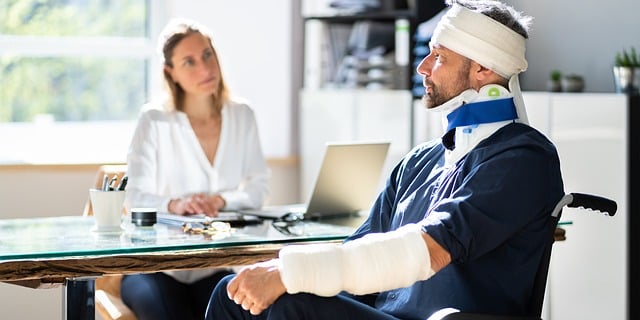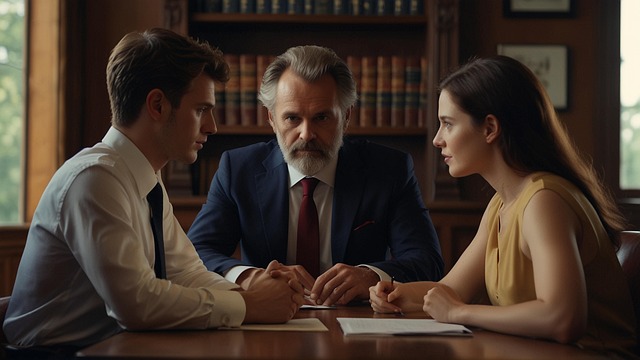Pedestrians' rights, especially those of individuals with disabilities, are crucial for road safety and accessibility. Legal protections ensure safe interactions between pedestrians and vehicles on sidewalks and roads. People with disabilities face unique challenges, such as physical barriers and invisible impairments, requiring accessible crossings, accommodations, and tailored support services. Awareness of these rights enables advocacy and ensures needs aren't overlooked in urban planning. Special considerations include DUI defense strategies for individuals with disabilities, addressing specific obstacles like physical and cognitive impairments and reliance on assistive technologies. Creating inclusive streets involves raising awareness, advocating for accessibility features, training city officials and law enforcement, and enforcing stricter penalties to ensure everyone can move freely and safely within their communities.
In today’s bustling urban landscapes, ensuring safe streets for pedestrians is paramount. This comprehensive guide delves into the critical issues facing our walking communities, focusing on the rights and protections of all individuals. From understanding pedestrians’ legal standing to addressing the unique challenges of street safety for people with disabilities, we explore strategies for fostering inclusive environments. Moreover, this article sheds light on the complex topic of DUI defense, specifically tailored to those with disabilities, offering insights into available solutions.
- Understanding Pedestrians' Rights: A Comprehensive Overview
- The Impact of Disabilities on Street Safety and Legal Protections
- DUI Defense for Individuals with Disabilities: Challenges and Solutions
- Advocating for Inclusive and Safe Streets: Strategies and Initiatives
Understanding Pedestrians' Rights: A Comprehensive Overview

Pedestrians’ rights are an integral part of road safety and accessibility, especially for individuals with disabilities. Understanding these rights is crucial in creating safe streets for all. In many jurisdictions, pedestrians have specific legal protections that ensure their safety while using sidewalks, crosswalks, and roads. This includes the right to be free from hazards like defective infrastructure, distracted drivers, and unsafe crossing conditions.
For individuals with disabilities, such as those facing a DUI (Driving Under the Influence) or other mobility challenges, navigating streets can be even more complex. Special considerations come into play, focusing on accessible crossings, reasonable accommodations, and tailored support services. Awareness of these rights empowers pedestrians to advocate for themselves and ensure they are not overlooked in urban planning and traffic management strategies. Additionally, it aids in promoting inclusivity and accessibility, ultimately enhancing road safety for everyone, including those with disabilities who require specific assistance while using public spaces and transportation.
The Impact of Disabilities on Street Safety and Legal Protections

For individuals with disabilities, navigating streets and public spaces can pose unique challenges that often impact their safety. Physical barriers, such as uneven sidewalks or lack of accessible crosswalks, can make it difficult for them to traverse urban environments independently. Additionally, invisible disabilities like visual or auditory impairments further complicate pedestrian experiences, requiring heightened awareness from both the individuals and surrounding communities.
Legal protections are in place to safeguard these rights and ensure equal access to safe streets. In many jurisdictions, specific laws address DUI defense for individuals with disabilities, emphasizing responsible driving practices while accommodating their unique needs. These measures not only promote inclusivity but also contribute to overall street safety by fostering a more aware and supportive environment for everyone, including those with disabilities.
DUI Defense for Individuals with Disabilities: Challenges and Solutions

When it comes to DUI (Driving Under the Influence) cases, individuals with disabilities face unique challenges that often complicate their defense. These challenges range from physical limitations hindering their ability to perform field sobriety tests to cognitive disabilities making it difficult to understand and navigate legal proceedings. Additionally, many people with disabilities rely on assistive technologies or care providers, which can further complicates law enforcement interactions.
Addressing these issues requires a multi-faceted approach. One solution is increased training for law enforcement officers and prosecutors on interacting with individuals with disabilities. This includes learning how to adapt field sobriety tests and ensuring accessibility during court appearances. Moreover, legal aid organizations specializing in DUI defense for people with disabilities can provide crucial support, offering expertise tailored to their unique needs and advocating for equal treatment under the law.
Advocating for Inclusive and Safe Streets: Strategies and Initiatives

Advocating for inclusive and safe streets is paramount in ensuring everyone, including individuals with disabilities, can navigate their communities freely and securely. One significant strategy involves raising awareness about the unique challenges faced by pedestrians with disabilities, such as those with visual or mobility impairments. This includes pushing for better physical accessibility features like ramped crossings, tactile paving, and well-maintained pathways free from obstacles.
Initiatives like training programs for city officials and law enforcement can help in creating a more inclusive environment. Moreover, advocating for stricter penalties against drivers who endanger pedestrians, particularly those with disabilities, through behaviors like drunk driving (DUI Defense for Individuals with Disabilities), can deter dangerous actions and enhance safety. By combining awareness, infrastructure improvements, and stringent enforcement, communities can strive to create safe street environments for all pedestrians.
Pedestrians’ rights and safe streets are inextricably linked, especially when considering the specific needs of individuals with disabilities. By understanding and advocating for their legal protections, we can create a more inclusive and accessible environment. The article has explored various aspects, from the comprehensive overview of pedestrians’ rights to the unique challenges faced by those with disabilities when facing DUI charges. Implementing strategic initiatives and fostering community engagement are key to navigating these complexities. Through advocacy and awareness, we can ensure that everyone, regardless of ability, enjoys the freedom and safety of our streets. This includes enhancing legal defenses for individuals with disabilities, as well as designing and maintaining streetscapes that cater to diverse needs. Ultimately, a comprehensive approach to pedestrians’ rights will lead to safer, more equitable communities for all.






